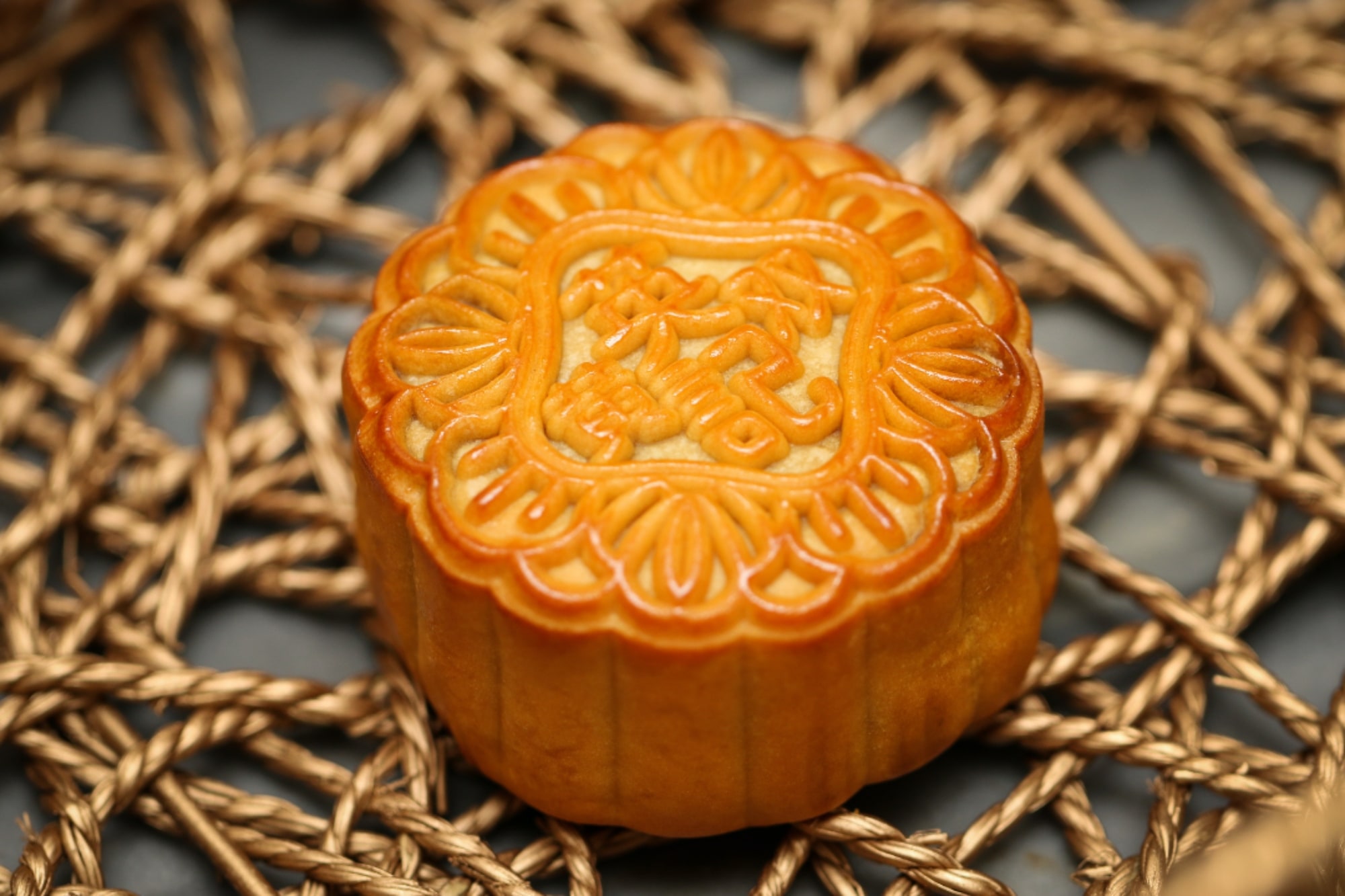Spill the tea
Settle in and get cultured, as we get you up to speed on everything you need to know about the festival of paper lanterns and glossy mooncakes.
History
Its origins stem from more than 3,000 years ago in ancient China. And like most Chinese festivities, lore and legend surround it. For the Mid-Autumn Festival, which coincides with the time of year that the moon shines the brightest and fullest, the story lies with lunar worship.
Chang’e
The most popular story you’ll hear floating around is that of moon goddess Chang’e (in Chinese, ‘嫦娥奔月’ or ‘Chang’e Ben Yue’). As it goes, Chang’e was once human, and the wife of Hou Yi – a legendary archer who shot down nine suns out of ten in the sky. Hailed as a hero, he was rewarded with an elixir of immortality by the Queen of Heaven.
He never, however, got around to drinking it. Some say Chang’e was a wretch who only wanted to become immortal, and others say she did it to save the elixir from the clutches of an evil apprentice, but Chang’e drank the entire concoction, became untethered to Earth, and ascended to the moon.
Husband and wife were, thus, separated for eternity. The ritual of moon worship began as people started following Hou Yi, who would dutifully prepare Chang’e’s favourite desserts and fruits every year to reassure her that she was not alone.
Moon worship in Zhou Dynasty
Another (more realistic) story is that the festival originated from the custom of Chinese emperors thanking the gods. This worship of the moon goddess was first recorded in the Zhou dynasty (1045–221 BC), as it was believed the practice of offering sacrifices to the moon would produce plentiful harvest the following year.
Current tradition
Today, held on the 15th day of the eighth month in the lunar calendar (September or early October in the Western calendar), the Mid-Autumn Festival is a watered-down version of olden lunar appreciation.
Moon viewing or worship is less prevalent, at least not for hours on end. Instead, most families celebrate by getting together for lantern-toting and mooncake-eating festivities, often paired with several cups of tea. In Singapore, large tents are sometimes set up in heartland areas, for a mini carnival of sorts, with games and ‘live’ performances to entertain the crowd.
Mooncakes
The other moniker for the Mid-Autumn Festival is Mooncake Festival, so it stands to reason mooncakes would be its highlight. Rounded to signify the harvest moon, the mooncake symbolises prosperity and reunion for the entire family.
How did the custom first come about? Legend has it that during the late Yuan dynasty (1271–1368 AD), mooncakes played a central role in freeing the Chinese from Mongol rule. The rebels successfully organised an uprising against the oppressive government, by distributing messages hidden in the edible pastries. From then on, mooncakes were eaten every year to celebrate the victory, and the rest, as they say, is history.
What it looks like
A typical traditional mooncake comprises a 1–3 cm thick crust that cocoons a rich, creamy filling, usually of the lotus seed paste or sweet bean paste variety. This often includes one or more whole salted duck egg yolks tucked within; the mooncake itself is baked to a golden-brown finish and imprinted with Chinese characters that often tell of the filling inside.
For a more modern twist, snow skin mooncakes – a no-bake variation that originated from Hong Kong – are also very popular. Served cold because of its sticky glutinous rice crust, new trending flavours are innovated every year, such as black forest, apricot and sour plum, and even local flavours like yuan yang (a mix of milk tea and coffee).
Lanterns
Is lantern toting, then, also a ritual of moon worship? Not quite. Carrying lanterns during the Mid-Autumn Festival is ubiquitous, because of the paper lantern’s traditional symbolisation for fertility, as well as the belief that it serves as a beacon for prosperity and good luck.
What it looks like
The traditional paper lantern has a collapsible frame, and is made from flimsy, brightly-coloured paper. There is always a slight fear of accidentally setting the lantern on fire when lighting the wax candle within. OG paper lanterns are usually simply round, but now come in all shapes and designs from intricate dragons to hand-painted panoramas.
Plastic, battery-operated lanterns are equally, if not more common, and often come in the shape of cartoon characters. Some spit out hackneyed Chinese music, and most come with an on-off switch for its built-in colourful lights.
In Singapore, for larger-than-life lantern installations, visit Gardens by the Bay or Chinatown for a display beautiful works of craftmanship as part of the seasonal affair.




























